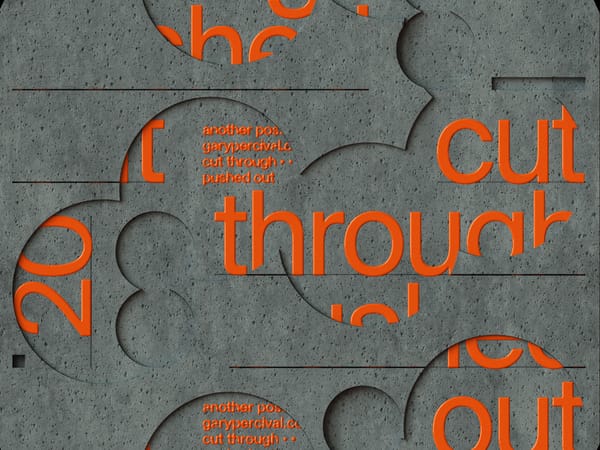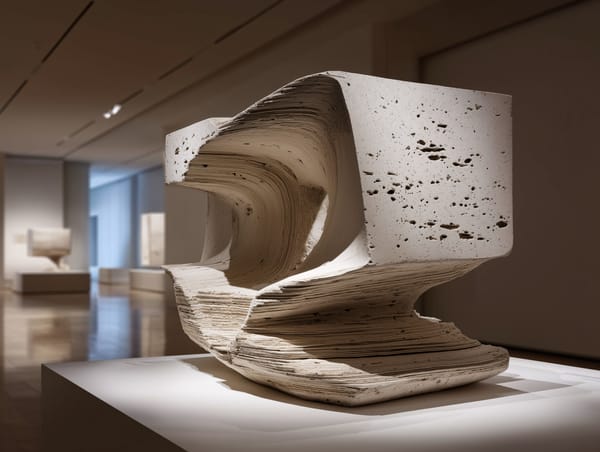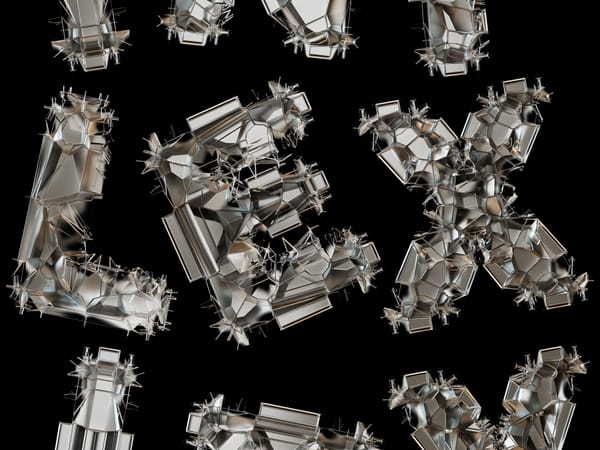Problems Aren’t in the Way 〜 They Are the Way
"Every project brings problems. The difference between burning out and growing through them lies in how you see them."
If you make a living from creative work, you already know: every project brings problems.
Deadlines shift. Clients change direction. Ideas fall flat halfway through execution.
And just when you think you’ve figured out a system, a new problem shows up to remind you that certainty is temporary.
For years, I treated those moments as interruptions, things I had to get past to return to “real” progress.
But the truth is, there’s no such thing as a creative path without problems.
They’re not detours from the work.
They are the work.
The Myth of Smooth Progress
We often imagine progress as a straight line · · from idea to execution, from start to success.
But creative work isn’t built that way. It’s made of friction.
The design that refuses to click, the pitch that gets rejected, the client feedback that dismantles your concept · · those moments aren’t obstacles blocking your path.
They’re the moments that build your path.
Because every time you solve a problem, you learn something that will shape the next piece of work · · and the next one after that.
The creatives who last aren’t the ones who avoid problems.
They’re the ones who use them as practice.
Reliability makes you steady; problems make you sharp.
Problems Are Creative Material
If you think about it, design itself is the art of problem-solving.
Every poster, brand identity, or layout begins with a question:
How do I communicate this clearly? How do I make it resonate? How do I make it work better?
The problem gives the work purpose.
Without it, creativity drifts into decoration.
Freelancers know this better than anyone 〜 the brief is rarely perfect, the budget is never ideal, and the circumstances are almost always imperfect.
But those limits are what spark invention.
Constraints force clarity.
Challenges shape originality.
And the problems that frustrate you today often become the very skills you’re hired for tomorrow.
That’s why “easy projects” rarely change you.
They pay the bills, but they don’t expand your range.
Resistance Is Feedback
When something feels stuck · · a layout that won’t balance, a concept that keeps falling apart · · it’s tempting to label it as failure.
But resistance is often feedback in disguise.
It’s showing you where your assumptions are weak.
Where your skills need stretching.
Where your idea hasn’t yet found its shape.
If you treat resistance as rejection, you’ll stop too soon.
If you treat it as guidance, you’ll go further than you thought you could.
The best designers I know don’t panic when a project gets difficult 〜 they get curious.
They zoom in, dissect the problem, and keep working until the confusion starts turning into clarity.
That’s what separates professionals from amateurs: not fewer problems, but a calmer relationship with them.
The Emotional Side of Problem-Solving
Let’s be honest · · facing problems is tiring.
Especially when you work for yourself.
When something goes wrong in a freelance project, it’s not just a technical issue 〜 it’s personal.
You feel it in your reputation, your schedule, and your confidence.
That’s why it helps to build emotional distance from the problem.
You’re not the problem; you’re the person working on it.
That shift changes everything. It keeps you from taking feedback as criticism or obstacles as proof you’re failing.
Once you detach ego from outcome, problems stop feeling like threats and start feeling like design challenges again · · puzzles to solve, not judgements to survive.
Turning Problems Into Practice
Here’s a mindset that helps:
Every problem is a training session for the next version of you.
The stressful client? Practise in boundaries.
The unclear brief? Practice in communication.
The project that fell apart? Practise in resilience.
You can’t build those traits by avoiding discomfort. You build them by moving through it 〜 slowly, clumsily, repeatedly 〜 until what once scared you now feels routine.
It’s why creative careers mature not just through talent, but through tolerance.
Every problem you face raises your threshold for what you can handle.
Every solution you find expands your creative toolkit.
Over time, that becomes your advantage · · not because you stopped hitting walls, but because you stopped fearing them.
The Work Beneath the Work
When you start seeing problems as the path, frustration becomes fuel.
You begin to recognise patterns · · the same friction points reappearing until you finally address them properly.
You stop wasting energy wishing things were easier and start using that energy to make things clearer.
Because the truth is, the obstacle isn’t in the way.
It is the way.
It’s the signal that you’re in the zone of growth · · where what you know meets what you still need to learn.
So the next time you hit a wall, don’t curse it.
Study it.
Ask what it’s teaching you about your process, your patience, or your priorities.
That’s where real creative progress hides 〜 not in the smooth days, but in the rough ones that make you sharper.
Closing Thought
Freelancing, design, and creativity · · they’re not about finding a life without problems.
They’re about learning to see problems differently.
The goal isn’t to clear the path; it’s to walk it better.
Because every obstacle you face is another layer of insight, resilience, and clarity that strengthens your craft.
So when the next problem appears 〜 and it will 〜 don’t look for a way around it.
Look straight at it.
The thing in your way isn’t blocking your progress.
It is your progress.
Progress in creative work doesn’t come from avoiding obstacles · · it comes from learning through them.
The problem in front of you isn’t a distraction from the path 〜 it is the path forward.
Thanks for reading.
Keep showing up for the work beneath the work.
—Gary



